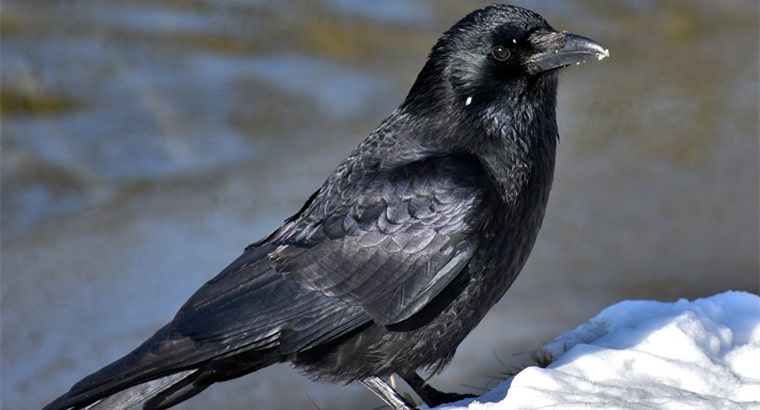Ravens are creatures that are popular in both fairy tales and urban legends. In fact, some cultures see raves as signs of bad omens or even messengers of gods. Yet, regardless of stories and superstitions, people have shown an interest and desire in owning their own raven. But could you keep a raven as a pet, or should you look somewhere else for your next companion?
Why Do Some People Keep a Raven as a Pet?
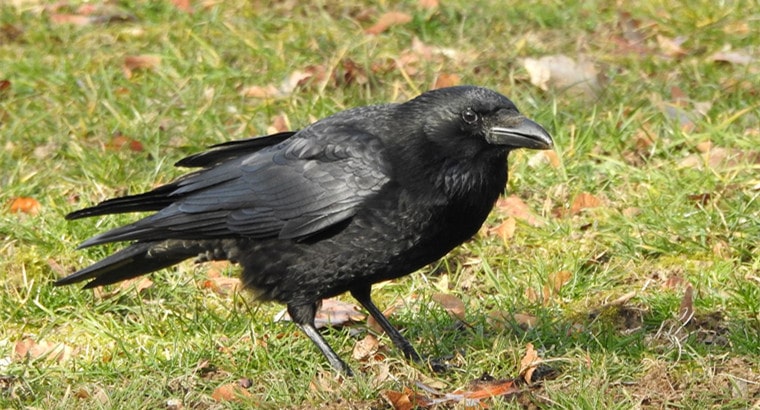
Although most people own cats, dogs, or even parakeets, others prefer unique pets such as ravens. And while their choice could seem rather strange, it’s not hard to see why they love the companionship of ravens.
Ravens Are Intelligent
According to research, young ravens rival and can even surpass adult chimps in tests of general intelligence. As a matter of fact, ravens are capable of understanding numbers, following cues, and many more complex tasks.
Not only that, but most ravens can actually make tools out of wood, which they use to build nests and procure food. And to top it off, ravens demonstrated self-awareness in front of mirrors, as they could recognize themselves.
But how does that help you as a raven owner? Since ravens are intelligent, they are capable of thinking and fending for themselves, making for exciting interactions.
For example, you can play complex games, solve puzzles, and with your raven. And if you want to push their intelligence even further, you can teach your raven simple words such as hello.
Ravens Show Emotion
Thanks to their intelligence, ravens are capable of understanding and showing complex emotions. For instance, your raven will display excitement when eating its favorite food.
Similarly, your raven could get frustrated and even sad when you don’t spend enough time with it. Those emotions make owning a raven much more exciting than any other common pet.
Furthermore, each raven has its own personality, making it a truly unique pet. While most cats will respond similarly to certain situations, ravens will act depending on their mood and personality. In other words, ravens are more akin to roommates than pets, meaning that they are much harder to handle.
4 Things to Consider Before Getting a Raven
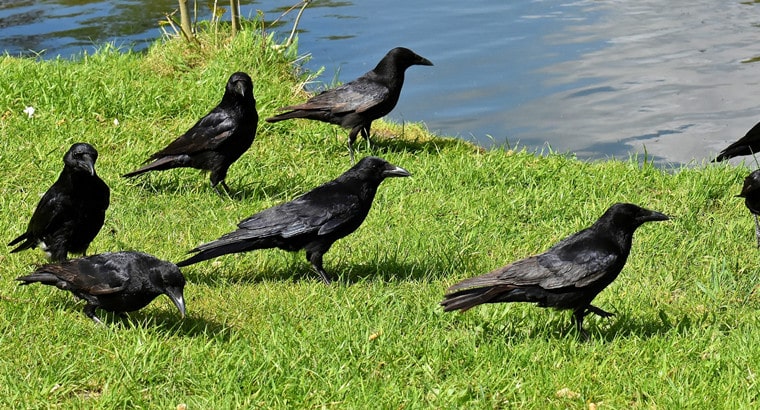
Even though ravens can seem like the perfect pet, owning one is not all sunshine and rainbows. From its behavior to its needs, there are a lot of things you need to consider before attempting to get yourself a raven.
1. You Can’t Cage Ravens.
At the end of the day, ravens are wild birds that are used to freedom and nature. They tend to fly over long distances and want to feel like they are in charge of their territory. As a result, you won’t be able to keep a raven on your property unless you have a huge piece of land.
When it comes to cages, things are even worse, as ravens dislike small spaces that don’t allow them to fly. And if you manage to trap a raven inside a bird box, you may end up doing more harm than good.
Since ravens are extremely intelligent, they get bored quickly, especially when they are trapped. So don’t be surprised if your raven will do its best to fight back or try to escape as soon as it gets the chance.
However, if you afford to spend some money, you could create an outdoor aviary suitable for a raven in your backyard. Even so, there is no guarantee that ravens will enjoy their new home and not crave freedom.
2. Ravens Bite.
Most bird enthusiasts already know that ravens have an extremely strong bite that can even crush small bones. Luckily, ravens avoid biting humans and prefer to peck or nip when they feel threatened. Yet, if they get angry or annoyed, you could end up bitten.
It’s also important to mention that if a raven bites your finger, you don’t need to pull its beak apart. Instead, you should wait a few minutes, as most ravens will let you go once they feel safer.
But as a precaution, you should avoid getting too close to a raven if it seems agitated or aggressive. The same applies to their nests, as most bites occur near them.
3. Ravens Are Noisy.
No one can deny that birds have a beautiful and sometimes calming song. But unlike most birds, ravens make a unique yet noisy squeaking type of call. And while their sounds are more sophisticated and complex, they still sound rougher than other common birds.
Additionally, ravens tend to call and shout at each other over long distances. In fact, sometimes, you can hear ravens calling for other birds from miles away. So owning or attracting a raven might disturb your neighbors, especially if you get your hands on a noisy one.
4. Ravens Don’t Live Alone.
Although some ravens prefer to live alone, most of them work in pairs of two. They scavenge together, fly together and most importantly, watch over their territory together.
As a result, if you capture a wild raven, it will most likely call to its partner day and night, making a lot of noise. Even worse, since ravens have emotions, the captured raven might get sad or depressed when away from their partner for long periods of time.
On the other hand, if you rescue and care for a tiny raven, it may bond with you instead of other ravens. However, that raven will become unable to bond with other birds, making it dependent on you.
And if you ever decide to release it, chances are that it will search for other humans since it can’t socialize with its peers.
Is It Legal to Own a Raven?

When it comes to owning a raven, things are not as simple as going to a nest and grabbing one. For starters, ravens are native to the United States, making it illegal to own them as pets. Why? Because wildlife officials fear that people will kidnap baby birds from their nests in order to sell them at pet shops.
On the other hand, it is legal to own ravens that are not native to the United States, such as the white-necked species. Those are usually bred in captivity, meaning that they have already bonded with humans and can’t be set free.
What If I Rescue a Raven?
While you could make a case for rescuing and keeping hurt ravens, it is still illegal to do so. The common procedure is to bring the bird to a local sanctuary or special care center.
However, you can apply for a special permit that will allow you to take care of ravens or similar birds. Even so, it can be extremely difficult to get this permit, as only nature reserves and wildlife rehabilitation centers can issue one.
Can I Get In Trouble for Owning a Raven?
Generally speaking, most authorities don’t pay a lot of attention to illegal raven owners, mostly because it’s hard to find them. But if one of your neighbors reports you, due to noise, the authorities will most likely confiscate your bird.
How Can I Get a Raven?
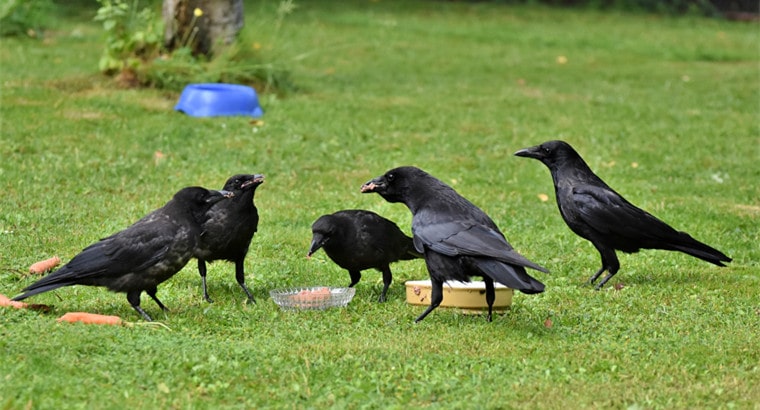
As previously mentioned, it is completely legal to purchase foreign species of ravens. Therefore, the easiest way to get a raven is to find a local breeder and get one from him.
However, prices are pretty high, and you could end up paying anywhere between $2,000 and $6,000 for a single raven. And since raven breeders are uncommon, you need to anticipate an additional cost for shipping the bird.
How Can I Attract a Raven?
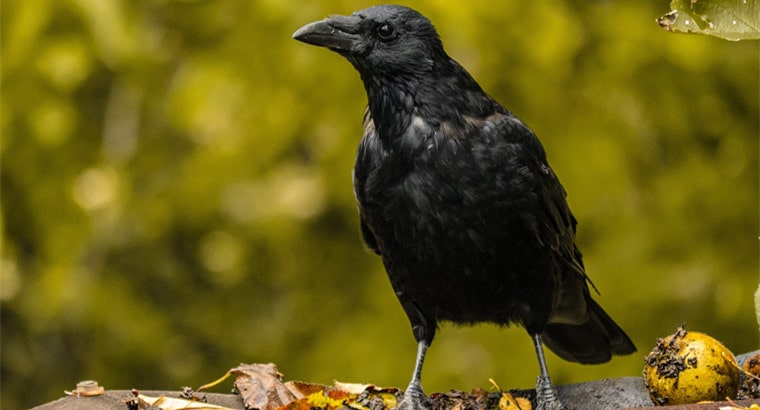
By now, you should know that it’s not a good idea to keep native ravens as pets inside your home. Instead, you could try to befriend your local ravens by providing them with food and a temporary shelter.
But keep in mind that normally, ravens see humans as dangerous and a threat. As a result, you will have to build up trust over a long period of time by using the following methods:
1. Make Your Garden Safe
First of all, you need to make sure that your garden is free of cats, dogs, or other animals that could attack the ravens. You should also get rid of anything that could create noise or resemble a threat to them. Things like shovels, wheelbarrows, and generators could scare ravens and make them avoid your garden in the future.
2. Feed Them at a Set Time
Ravens are scavengers, meaning that they eat whatever they can find. Therefore, feeding them at a set time, usually early in the morning or late in the evening, will make them come back to your place regularly.
Additionally, you should always keep a piece of meat in the garden in case other stray ravens fly by. However, keep in mind that you could end up attracting other animals like raccoons and stray dogs.
3. Use Shiny Objects
Similar to crows, ravens like to grab and collect shiny objects. In fact, any small object that can reflect the sun will most likely catch their attention. Placing a few small objects such as polished rocks or old jewelry can turn your garden into a souvenir shop for all the local ravens.
4. Place Some Eggs
Although ravens primarily eat meat, most of them like eggs as well. So placing a few eggs in your garden might catch their attention. But just like previously mentioned, you run the risk of attracting unwanted guests, so remember to keep an eye out for other animals.
5. Install a Birdbath
Water is extremely important for all types of birds, and ravens are no different. Installing a birdbath will allow visiting ravens to drink and cool off during hot summer days.
Not to mention that some ravens, just like raccoons, like to dip their food in water to moisten it. Therefore, you will have to install a birdbath if you want regular visits from your local ravens.
However, normal birdbaths don’t cut it, as ravens are considerably larger than other birds. So you should find a larger and deeper birdbath that gives ravens enough space to bathe. Besides, ravens tend to store excess food, usually around or under birdbaths, so the taller the birdbath, the better.
6. Ravens Love Trees
Like any other bird, ravens prefer to sit and make their nests in trees. As a result, you should have a few nice trees for them to land on. Otherwise, ravens might avoid your garden or leave as soon as they eat, preventing you from trying to meet them.
7. Place a Fake Raven
It should be clear by now that ravens are social birds that like to live in pairs. As such, seeing a fake bird in your garden might trick them into thinking that it is the right place to hang out. And as soon as one raven decides to visit your garden, more will follow to check out what’s happening.
You can find fake ravens at local wildlife stores or you can use Halloween decorations instead. Placing one or two in your tree and near the birdbath should be enough to attract a few ravens. Just remember that placing too many could turn away the ravens or even attract predators.
8. Don’t Get Too Close
You might be tempted to go ahead and personally meet your feathered visitors as soon as they land in your garden. But due to large persecutions in the nineteenth century, ravens usually shy away from people.
Thus, getting too close might scare them away and make them fearful of your garden. Instead, you need to give ravens enough space and privacy so they can get accustomed to you, and then try to approach them.
The Verdict: Should You Get a Pet Raven?
Overall, most people can agree that ravens are fascinating creatures that never cease to surprise us. Not only are they smart, but they are also capable of understanding complex emotions like happiness and anxiety.
However, it’s clear that you shouldn’t keep a raven as a pet as they are wild and unpredictable animals. But if you truly want to meet and take care of them, you can always transform your garden into a safe haven for wild ravens.


